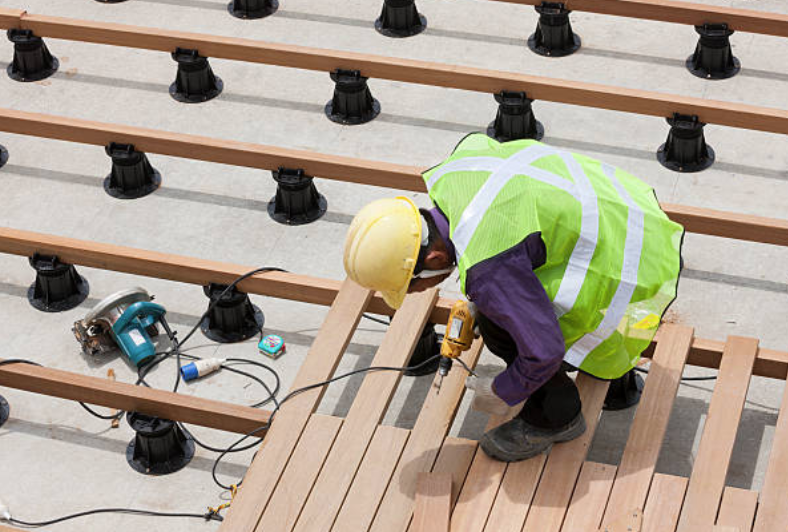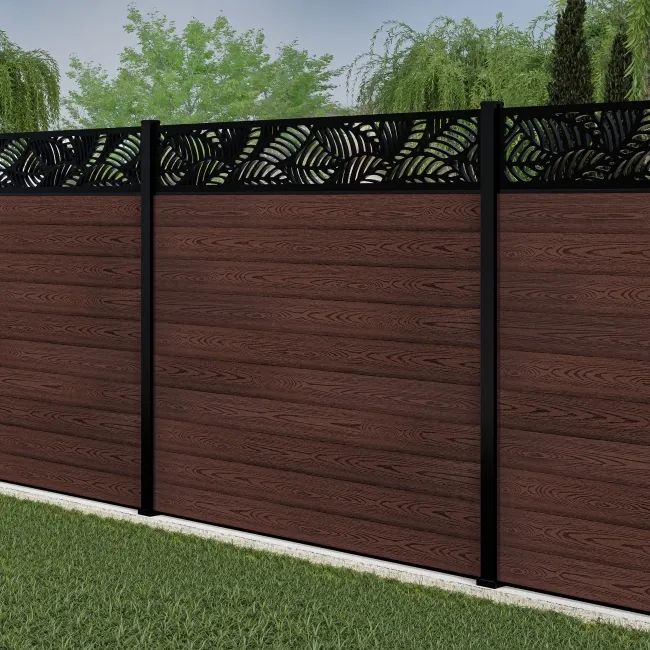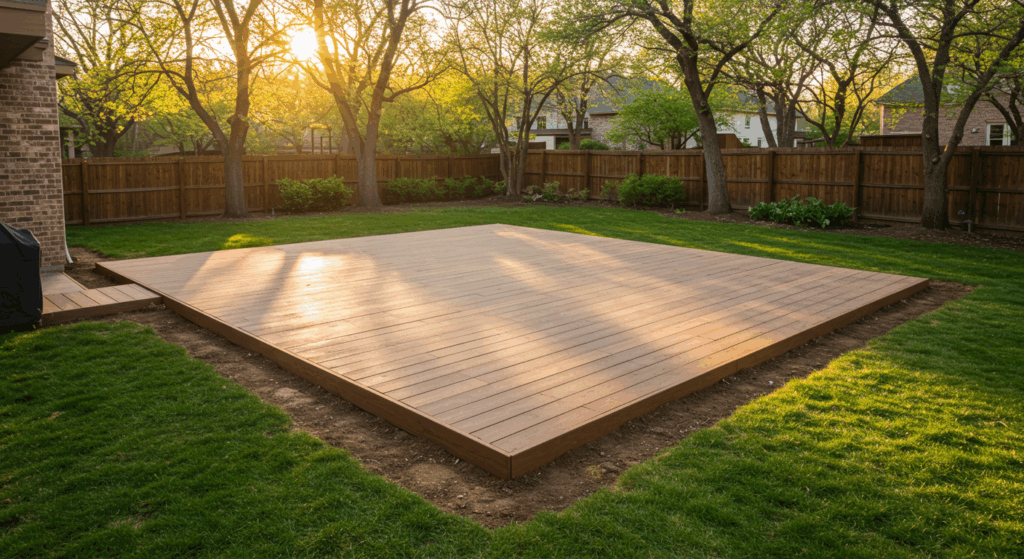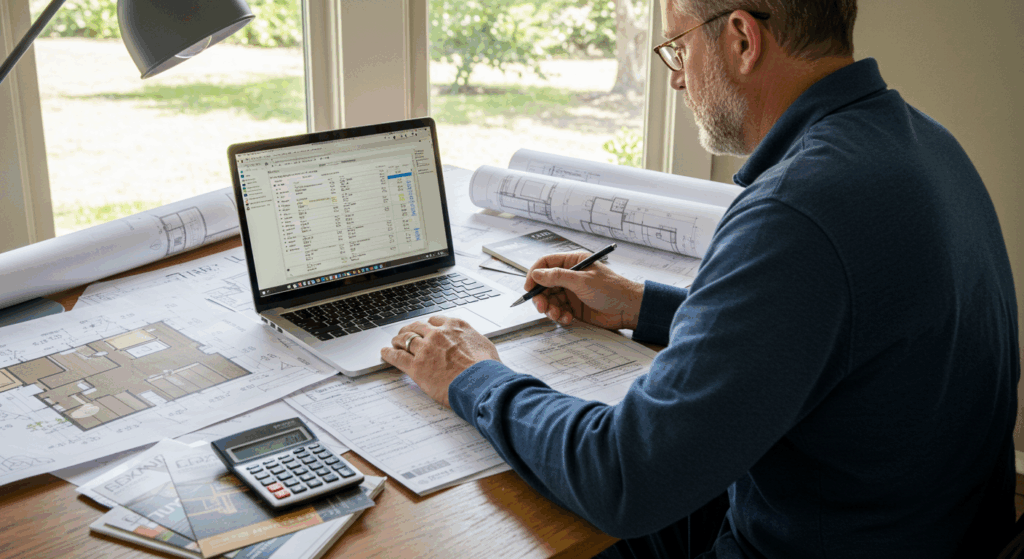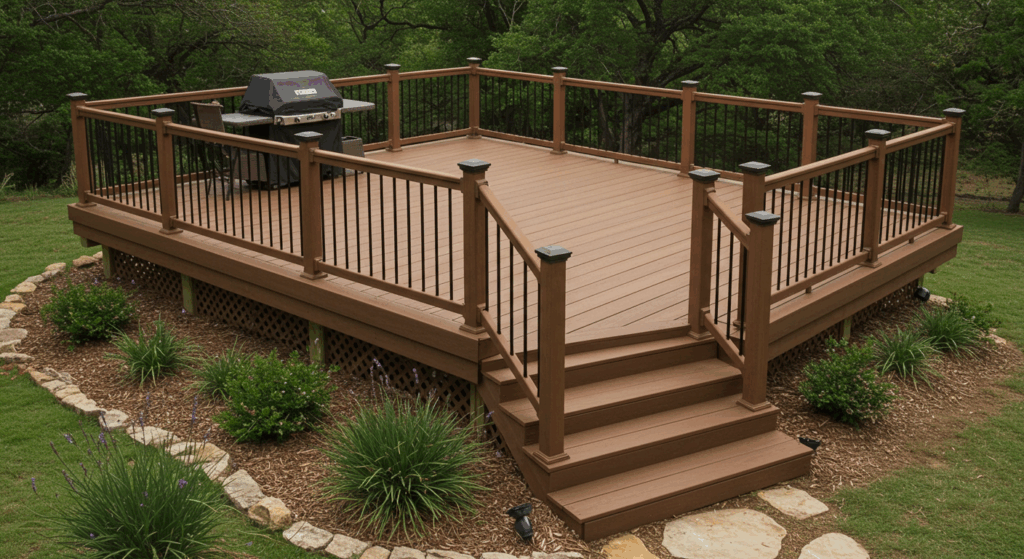If you’ve been dreaming about transforming your outdoor space into a beautiful, low-maintenance haven, you’ve likely come across Trex, the leading brand in composite decking. With its promise of durability, sustainability, and aesthetic appeal, Trex has become a top choice for homeowners looking to upgrade their decks. But here comes the big question: should you tackle the installation yourself, or hire a professional?
While the DIY route can seem tempting, especially for the handy or budget-conscious homeowner, there are compelling reasons why Trex installation is best left to the experts. In this blog post, we’ll dive deep into the pros and cons of DIY vs. professional installation, and explain why trusting the pros can save you time, money, and headaches in the long run.
Also Read: Financing Your Dream Backyard: How to Budget for Trex Upgrades
Understanding Trex Decking
Trex decking is a composite product made from recycled wood fibers and plastic, designed to mimic the look of natural wood without the maintenance headaches. It resists rot, splinters, termites, and fading, making it a popular long-term investment. But despite its user-friendly reputation, installing Trex decking still requires precision, specific techniques, and an understanding of structural design.
DIY Installation: The Hands-On Approach

For homeowners who love rolling up their sleeves, DIY Trex installation can seem like an exciting challenge. The DIY process typically involves:
- Planning the Design: Measuring your space, creating a layout, and purchasing materials.
- Preparing the Site: Removing old decking (if any), leveling the ground, and ensuring the foundation is solid.
- Building the Frame: Constructing the support structure using pressure-treated lumber.
- Installing the Boards: Cutting, spacing, and fastening Trex boards using the recommended fasteners or hidden clip systems.
- Finishing Touches: Adding railings, stairs, and trim for a complete look.
While this method can be rewarding, it comes with challenges.
Pros of DIY
- Cost Savings: No labor fees.
- Personal Satisfaction: Pride in building something yourself.
- Custom Timeline: Work at your own pace, on your schedule.
Cons of DIY
- Learning Curve: Requires research, practice, and patience.
- Tool Costs: Need to purchase or rent specialized tools.
- Higher Risk of Errors: Mistakes can lead to wasted materials or structural issues.
- Warranty Limitations: Improper installation can void Trex’s product warranty.
Professional Trex Installation: Expertise You Can Trust

Professional installers bring years of experience, specialized tools, and a deep understanding of building codes and best practices. The professional installation process generally includes:
- Consultation & Design: Assessing the site, discussing design options, and preparing detailed estimates.
- Permits & Codes: Handling local permits and ensuring compliance with building codes.
- Site Preparation & Framing: Removing old structures, preparing the base, and constructing a sturdy frame.
- Board Installation: Installing Trex boards with precision, using the right fasteners and spacing techniques.
- Final Touches: Adding railings, lighting, and custom features as needed.
Pros of Professional Installation
- Quality Assurance: Workmanship backed by experience.
- Time Efficiency: Professionals complete projects faster.
- Warranty Protection: Ensures Trex warranty remains valid.
- Code Compliance: Adheres to local regulations.
- Better Aesthetics: Clean, polished finish.
Cons of Professional Installation
- Higher Upfront Cost: Labor charges increase total project cost.
- Scheduling Dependence: You’re on the contractor’s timeline.
DIY vs. Pro: Head-to-Head Comparison Table
| Feature | DIY Installation | Professional Installation |
|---|---|---|
| Cost | Lower upfront (no labor fees) but potential hidden costs if mistakes occur. | Higher upfront, but fewer unexpected expenses. |
| Time Investment | Several weekends or more, depending on experience. | Typically a few days to a week, depending on size. |
| Skill Level Required | Intermediate to advanced DIY skills. | No homeowner effort; handled by skilled professionals. |
| Tools & Equipment | Must purchase or rent specialized tools. | Professionals bring all necessary tools and equipment. |
| Warranty | Risk of voiding warranty if not installed properly. | Warranty typically protected when using certified installers. |
| Building Code Compliance | Homeowner responsible for understanding and meeting codes. | Handled by professionals familiar with local codes. |
| Aesthetic Quality | Depends on DIY skill level; may have imperfections. | High-quality, polished finish with attention to detail. |
| Stress & Hassle | Can be stressful, especially if facing unexpected issues. | Minimal stress; professionals manage the entire process. |
| Customization | Full control, but limited by DIY capability. | Pros can deliver custom designs and features. |
The Allure of DIY: Why Homeowners Consider Installing Trex Themselves
Let’s be honest: the idea of a DIY project carries a certain charm. There’s satisfaction in completing a project with your own two hands, not to mention potential cost savings on labor. Many homeowners believe that with the right tools, a few YouTube tutorials, and a free weekend, they can knock out a deck installation and toast marshmallows on it by Sunday night.
DIY offers some advantages:
- Cost Savings on Labor: Labor can account for 30-50% of the total deck installation cost. Doing it yourself means you only pay for materials.
- Control Over Timeline: You can work on your own schedule, without waiting for contractor availability.
- Sense of Accomplishment: There’s no denying the pride that comes with finishing a major home improvement project yourself.
But here’s where things get tricky.
The Hidden Challenges of DIY Trex Installation
While the idea of a DIY deck sounds appealing, Trex installation isn’t as straightforward as it might seem. Composite decking materials like Trex are engineered products that require specific techniques, tools, and experience to install correctly. Here are some of the biggest challenges DIYers face:
- Precision Matters: Trex boards need to be spaced and fastened precisely to allow for expansion and contraction. Improper installation can lead to warping, buckling, or gaps over time.
- Specialized Tools Required: Many homeowners don’t own the specialized tools (like hidden fastener systems or specific saw blades for composite materials) needed for Trex installation.
- Complex Structural Considerations: A deck isn’t just a floor; it’s a structure that has to safely support weight, withstand weather, and comply with local building codes. Mistakes can be dangerous.
- Warranty Risks: DIY installation can void your product warranty if not done according to Trex’s strict installation guidelines.
- Time and Effort: What starts as a “weekend project” often stretches into weeks or months, especially for homeowners unfamiliar with deck building.
Why Professional Installation Makes Sense

Now let’s look at why hiring a professional deck contractor is often the smarter choice when it comes to Trex installation.
1. Expertise and Experience
Professional deck builders have years of experience installing Trex and other composite materials. They know the nuances of the product, from proper joist spacing to hidden fastener systems, ensuring that the deck is both beautiful and structurally sound.
2. Time Efficiency
What might take you several weekends, a pro team can often complete in just a few days. Their efficiency not only saves time but minimizes the disruption to your household.
3. Access to Specialized Tools
Pros come equipped with all the right tools, saving you the expense (and learning curve) of purchasing and mastering them yourself.
4. Compliance with Codes and Permits
Professional contractors are familiar with local building codes and permit requirements. They can ensure your deck is up to code, which protects you from potential fines or safety hazards down the line.
5. Warranty Protection
Many Trex products come with limited warranties, but only if installed according to manufacturer guidelines. Certified Trex installers can ensure your warranty remains intact.
6. Better Aesthetics and Longevity
Professionals deliver a polished finish that not only looks better but also lasts longer. Proper installation prevents common issues like uneven surfaces, squeaky boards, or premature wear.
Real Costs: DIY vs. Pro
Let’s break it down. While DIY might save you 30-50% on labor, you’re still responsible for purchasing or renting tools, disposing of waste, and potentially fixing mistakes. If you damage expensive composite boards during cutting or fastening, replacements add up quickly. Worse, if you install something incorrectly and it fails, you might end up hiring a pro to fix it anyway—doubling your costs.
Professional contractors, on the other hand, often get bulk discounts on materials, have established waste disposal methods, and can anticipate problems before they become costly errors.
Key Factors to Consider Before Choosing
Before deciding whether to go DIY or hire a pro, think about the following:
- Project Size & Complexity: Small, straightforward projects might be manageable for a confident DIYer. Large, multi-level decks or custom features usually need professional expertise.
- Budget: Consider not just the upfront costs but potential hidden expenses of DIY, such as tool purchases, material waste, and possible corrections.
- Time Available: Do you have the time to dedicate to a multi-weekend project, or would you prefer it done efficiently by a team?
- Experience & Confidence: If you’ve built large structures before and understand construction principles, DIY might be realistic. If not, mistakes can be costly.
- Safety Concerns: Remember that a deck isn’t just decorative; it needs to be structurally sound to keep people safe.
Safety Should Never Be Overlooked

Building a deck isn’t just about aesthetics; it’s about creating a safe, sturdy structure. Professional installers understand the load requirements, foundational supports, and hardware needed to ensure your deck can handle everything from heavy furniture to a bustling backyard party. A poorly built DIY deck isn’t just an eyesore, it can be a hazard.
Environmental Impact and Sustainability
Many homeowners choose Trex because of its eco-friendly reputation: it’s made from 95% recycled materials, including plastic film and reclaimed wood. But did you know that professional installers can help maximize the sustainability of your project?
Trex is an eco-friendly material, but installation methods can impact sustainability. Professional installers typically generate less waste and know how to recycle scraps and packaging. They can also advise you on additional eco-friendly choices, like solar-powered deck lights or sustainably sourced framing materials.
DIYers may not have access to the same recycling channels, and mistakes can lead to wasted materials—reducing the environmental benefit of your project.
Read More: Eco-Friendly Outdoor Living: 10 Proven Reasons Why Trex is the Green Choice
When DIY Makes Sense
Of course, there are scenarios where DIY might be reasonable. If you have previous construction experience, access to the necessary tools, and a clear understanding of the installation guidelines, you may be able to tackle a small Trex project on your own. For example, building a small platform or bench using Trex materials could be a fun and manageable weekend project.
However, for large-scale decks, multi-level designs, or projects that involve structural modifications, the risks of DIY far outweigh the benefits.
Common DIY Mistakes (And How Pros Avoid Them)
- Improper Joist Spacing: Trex requires specific joist spacing for optimal performance. DIYers often overlook this, leading to sagging or bouncy boards.
- Incorrect Fasteners: Using the wrong screws or clips can damage the composite material or void the warranty.
- Ignoring Expansion Gaps: Trex expands and contracts with temperature changes. Pros know how to space boards correctly to accommodate this.
- Neglecting Permits: Many DIYers skip the step of pulling permits or checking local codes, risking fines or forced reconstruction.
- Poor Drainage Planning: Without proper slope and drainage, water can pool under the deck, leading to long-term issues.
Professional installers are trained to avoid these pitfalls, ensuring your deck lasts for decades.
The Bottom Line: Invest in Professional Expertise
Your outdoor living space is an investment in your home’s value, your lifestyle, and your family’s safety. While DIY projects can be rewarding, Trex installation demands a level of precision, expertise, and experience that most homeowners simply don’t have.
By hiring a professional, you ensure that your deck not only looks stunning but also performs flawlessly for years to come. You protect your product warranty, comply with local regulations, and avoid costly mistakes. Most importantly, you gain peace of mind knowing your deck was built right the first time.
So, DIY or Pro? When it comes to Trex installation, leave it to the experts. Sit back, relax, and enjoy the outdoor oasis you’ve always wanted—without the stress, sweat, or second-guessing.
Final Thoughts
If you’re considering upgrading your outdoor space with Trex, reach out to a certified professional in your area. Not only will they help you design a deck that fits your vision and budget, but they’ll also ensure it stands the test of time.
Remember, your home deserves the best, and sometimes, the best choice is trusting the pros.

